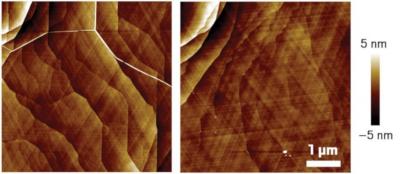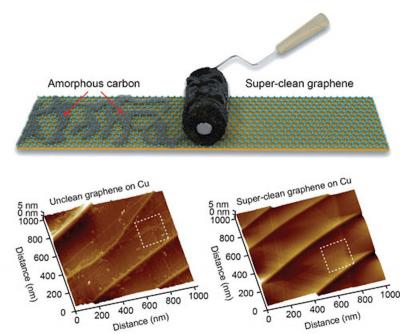by MBF Admin | Aug 27, 2021 | 2D materials, Aerospace, AGM, Angstron Materials, Audio, CVD, Defects, Development, Graphene applications, Investment, Products, Research, Technical / Research, Transistors
A team of researchers, led by Director Rod Ruoff at the Center for Multidimensional Carbon Materials (CMCM) within the Institute for Basic Science (IBS) and including graduate students at the Ulsan National Institute of Science and Technology (UNIST), has achieved...
by MBF Admin | Jul 16, 2020 | 2D materials, Aerospace, AGM, Angstron Materials, Audio, Defects, Development, Graphene applications, Investment, Products, Research, Technical / Research
An international team of researchers in Korea, the UK, Japan, the US and France recently shed light on the mysterious ability of graphene (and other carbon materials) to change its structure and even self-heal defects, by showing that fast-moving carbon atoms catalyze...

by MBF Admin | Jan 17, 2020 | 2D materials, Aerospace, AGM, Angstron Materials, Audio, CVD, Defects, Development, Electronics, Graphene applications, Graphene production, Investment, Products, Research, Technical / Research
Researchers from Nanjing University in China have developed a method to make large graphene films free of any wrinkles. The ultra-smooth films could enable large-scale production of electronic devices that harness the unique physical and chemical properties of...

by MBF Admin | Oct 3, 2019 | 2D materials, Aerospace, AGM, Angstron Materials, Audio, CVD, Defects, Development, Graphene applications, Investment, Products, Research, Technical / Research, University of Manchester
In order for CVD graphene to be used in its intended application, it needs to be transferred from the growth substrate to a target substrate – a challenging but extremely important process step. Typically the transfer is done by spin-coating a supporting polymer layer...

by MBF Admin | Sep 13, 2019 | 2D materials, Aerospace, AGM, Angstron Materials, Audio, CVD, Defects, Development, Graphene production, Investment, LG, Products, Research, Roll to roll
According to our information, LG Electronics is aiming to start supplying CVD graphene materials worldwide soon, with an aim to accelerate the adoption of CVD graphene in various applications. LG is collaborating with research groups to identify new applications for...
by MBF Admin | Aug 6, 2019 | 2D materials, Aerospace, AGM, Angstron Materials, Audio, Defects, Development, Graphene DNA Sequencing, Investment, Medicine, Membranes, Products, Research
Researchers at the University of Illinois examined how tiny defects in graphene membranes, formed during fabrication, could be used to improve molecule transport. They found that the defects make a big difference in how molecules move along a membrane surface. Instead...



